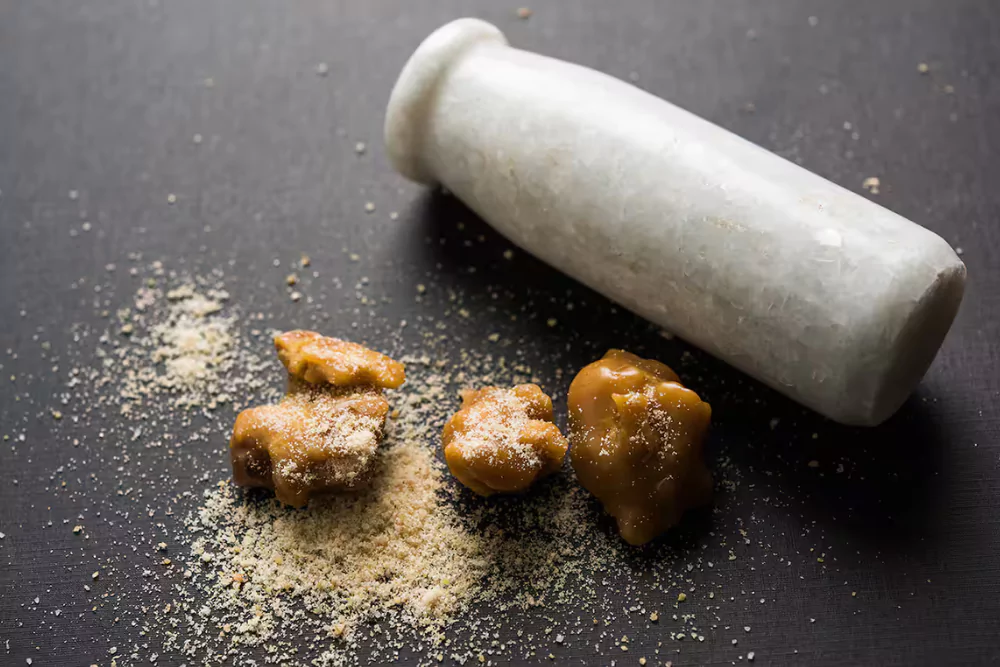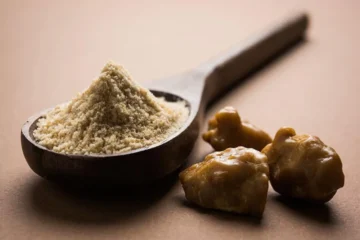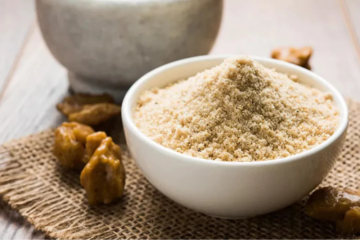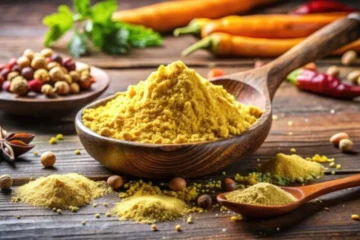Hing, also known as asafoetida, is more than just a pungent spice—it’s a powerhouse of flavor and digestion-enhancing benefits. Let’s dive into the science behind Hing and explore how it impacts your food in simple terms.
How does hing chemically interact with food to enhance flavor and aroma?
Short Answer: Hing contains sulfur-rich compounds that break down during cooking, releasing aromas and enhancing umami flavors by interacting with fats and heat.
Detailed Explanation:
- Breakdown of sulfur compounds: Hing contains compounds like ferulic acid and disulfides, which become volatile when heated and infuse the food with a savory aroma.
- Boosts umami: Hing mimics glutamates found in meat and cheese, which deepens the savory flavor profile of vegetarian dishes.
- Fat interaction: These flavor compounds dissolve in ghee or oil, allowing a richer distribution of aroma and taste throughout the dish.
- Neutralizes unwanted smells: Hing can mask pungent or undesirable odors from lentils or cruciferous vegetables, making dishes more appetizing.
Does hing help with digestion, and what compounds make it effective?
Short Answer: Yes, hing aids digestion by stimulating enzyme production and reducing gas formation, thanks to compounds like ferulic acid and umbelliferone.
Detailed Explanation:
- Stimulates digestive enzymes: Hing activates bile flow and enhances the secretion of digestive juices, helping in quicker breakdown of food.
- Reduces bloating: It prevents the formation of intestinal gas by inhibiting bacteria responsible for fermentation.
- Contains antispasmodic properties: The compound umbelliferone in hing helps relax intestinal muscles, easing cramps and spasms.
- Combats acidity: Hing reduces acid reflux and supports gut health through its alkaline nature and natural carminative effects.
Why does hing have such a strong smell, and how does it change when cooked?
Short Answer: Hing’s strong smell comes from sulfur compounds like diallyl sulfide, which mellow and transform into a pleasant aroma when heated in oil or ghee.
Detailed Explanation:
- High sulfur content: The raw form of hing contains organic sulfur compounds that give it a rotten egg-like odor.
- Thermal reaction: When cooked, these compounds undergo Maillard reactions and break down into aromatic molecules.
- Fat solubility transformation: Cooking in ghee or oil helps dissolve these volatile compounds, changing them into desirable flavor agents.
- Aromatic layering: Once transformed, hing adds depth and complexity to the base of curries, dals, and pickles.
Can hing alter the nutritional value of a dish, or does it primarily affect taste?
Short Answer: Hing primarily enhances taste but offers minor nutritional benefits like antioxidants and micronutrients in small amounts.
Detailed Comparison in Table:
| Aspect | Effect of Hing |
|---|---|
| Flavor | Enhances umami and balances pungent ingredients |
| Nutrition | Provides trace minerals like iron, calcium, and antioxidants |
| Digestion | Boosts metabolism and prevents gas and bloating |
| Calories | Negligible; does not impact calorie count |
Conclusion: While hing doesn’t significantly boost the nutritional profile of a meal, it adds minor health value while elevating taste and aiding digestion.
Are there any scientific studies backing the health benefits of hing in cooking?
Short Answer: Yes, multiple studies support hing’s effectiveness in reducing flatulence, inflammation, and microbial growth due to its active phytonutrients.
Key Findings from Scientific Studies:
- Anti-flatulent effect: A study published in the *Journal of Ethnopharmacology* (2009) confirmed that hing significantly reduces intestinal gas and supports digestion.
- Antioxidant activity: According to research in *Phytotherapy Research* (2013), hing is rich in antioxidants like ferulic acid that reduce oxidative stress in the body.
- Anti-inflammatory properties: Studies have shown that compounds in hing inhibit COX enzymes, reducing inflammation markers naturally.
- Antimicrobial potential: Hing exhibits antibacterial effects against harmful pathogens like E. coli and Staphylococcus aureus, supporting gut health.
Conclusion: The Science Behind Hing is Real and Remarkable
Hing is not just a traditional spice—its benefits are deeply rooted in science. From flavor enhancement through sulfur interactions to aiding digestion with enzyme stimulation, hing plays a multi-functional role in your food. While its nutritional contribution is minimal, its medicinal and culinary benefits make it an irreplaceable ingredient in Indian kitchens.
At Hingwala, we ensure our hing is pure, potent, and packed with the benefits that modern science now confirms. Add a pinch, and experience the science-backed magic of this ancient spice.





